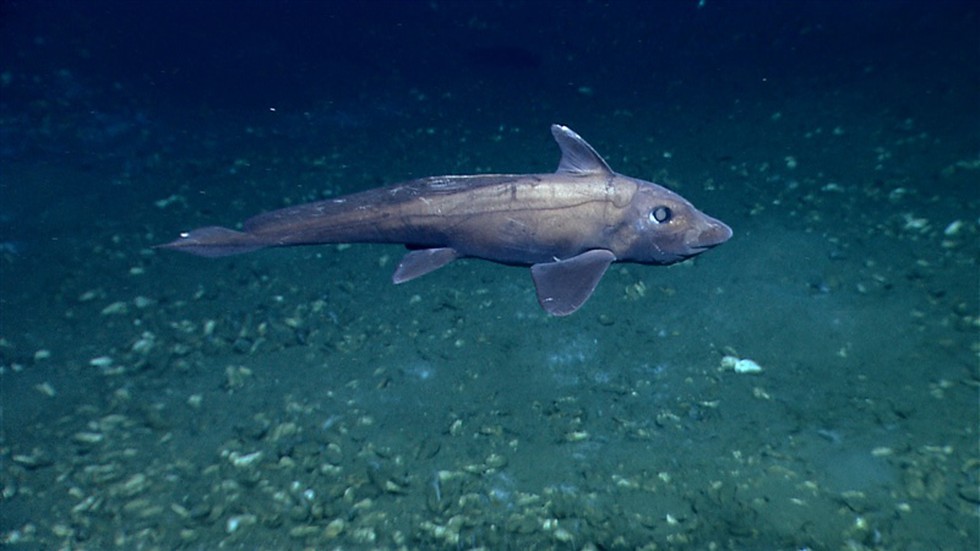A recent research expedition in the Chatham Rise, located about 1,000 kilometers (621 miles) east of New Zealand’s South Island, has led to the discovery of a new species of ghost shark. This area is known for its unique deep-sea biodiversity.
The New Species: Australasian Narrow-nosed Spookfish
The new species has been named the Australasian Narrow-nosed Spookfish. It was discovered by researchers from the National Institute of Water and Atmospheric Research (NIWA) in Wellington, who found it in the waters off Australia and New Zealand.
Physical Characteristics
- Long Nose: The Australasian Narrow-nosed Spookfish features a distinctively long nose.
- Eyes: It has bulged-out black eyes.
- Skin Color: Its skin is described as ‘chocolate brown.’
- Tail: The species also has a unique long, wispy tail.
Challenges in Research
NIWA scientist Brit Finucci expressed excitement about this discovery, noting the difficulties in studying ghost sharks due to their deep-sea habitat. The lack of information regarding their biology and threat status is a significant challenge.
Genetic and Morphological Differences
Finucci pointed out that while specimens of ghost sharks are found in global waters, the Australasian Narrow-nosed Spookfish is genetically and morphologically distinct from its relatives. To honor her grandmother, Finucci named the species Harriotta avia, where ‘avia’ means grandmother in Latin.
Importance of Study
Though little is known about this newly discovered species, studying it is crucial. Insights gained can help scientists develop strategies for the conservation of ghost sharks.
Understanding Ghost Sharks
Ghost sharks, also referred to as chimeras or spookfish, are distant relatives of sharks and rays. They belong to a separate group of fish characterized by the following features:
- Bone Structure: Their skeletons are made of cartilage rather than bone.
- Scales: They lack scales and possess unique anatomical features.
- Diet: Ghost sharks primarily feed on shrimp and mollusks.
Habitat and Threats
Living primarily in deep waters, ghost sharks are notoriously difficult to study. In 2017, one ghost shark was spotted off the coast of California. Despite their elusive nature, ghost sharks face potential threats from overfishing, often being caught accidentally or exploited commercially.
Conservation Status
According to the International Union for Conservation of Nature (IUCN):
- None of the ghost shark species are currently listed as endangered.
- Some species are categorized as ‘vulnerable,’ and a few are deemed ‘near threatened.’
Multiple-Choice Questions (MCQs):
- What is the newly discovered species of ghost shark called?
- A) Australasian Narrow-nosed Spookfish
- B) Chatham Rise Ghost Shark
- C) Harriotta avia
- D) Both A and C
- Answer: D) Both A and C
- Who discovered the Australasian Narrow-nosed Spookfish?
- A) Brit Finucci
- B) National Oceanic and Atmospheric Administration
- C) International Union for Conservation of Nature
- D) New Zealand Department of Conservation
- Answer: A) Brit Finucci
- What unique feature does the Australasian Narrow-nosed Spookfish have?
- A) Blue skin
- B) Short tail
- C) Long nose
- D) Scaleless body
- Answer: C) Long nose
- What are ghost sharks primarily known for?
- A) Being endangered
- B) Their soft bodies and cartilaginous skeletons
- C) Living in shallow waters
- D) Being a type of shark with scales
- Answer: B) Their soft bodies and cartilaginous skeletons
- What is the conservation status of most ghost shark species according to the IUCN?
- A) Endangered
- B) Vulnerable or near threatened
- C) Not at risk
- D) Extinct
- Answer: B) Vulnerable or near threatened
